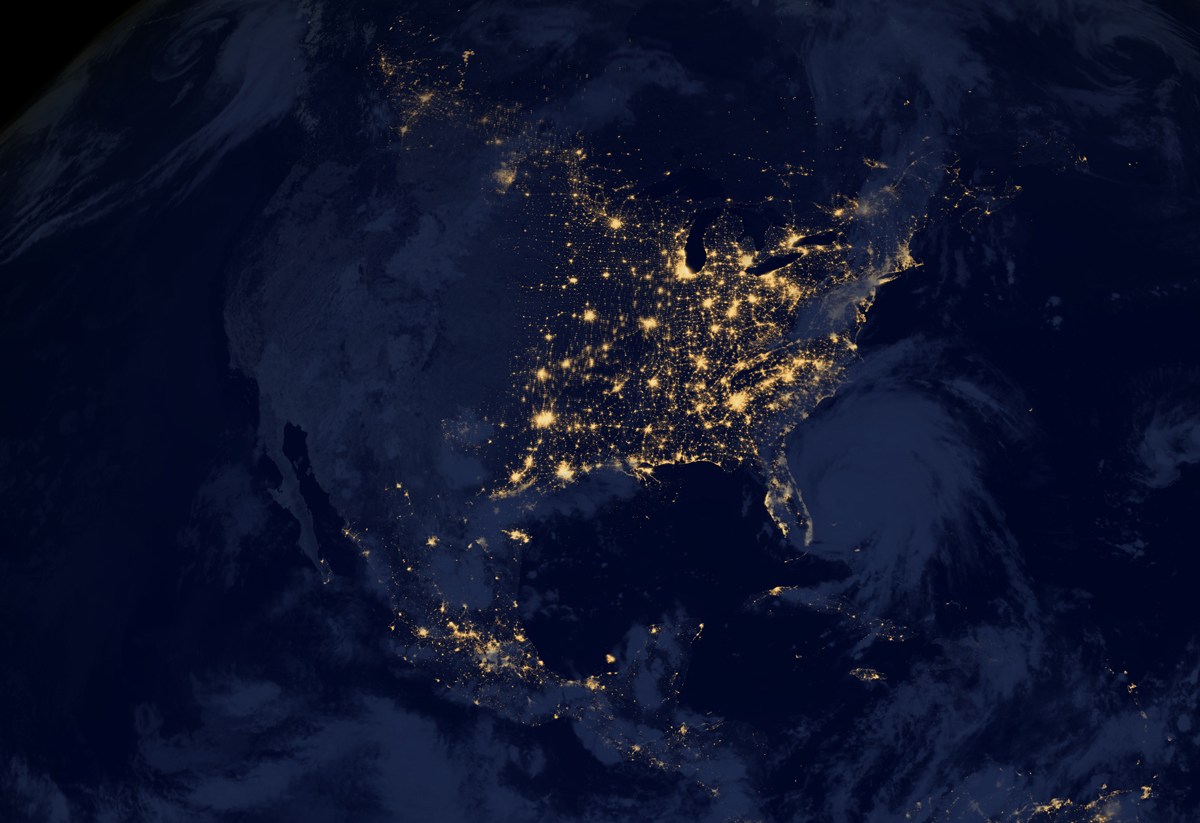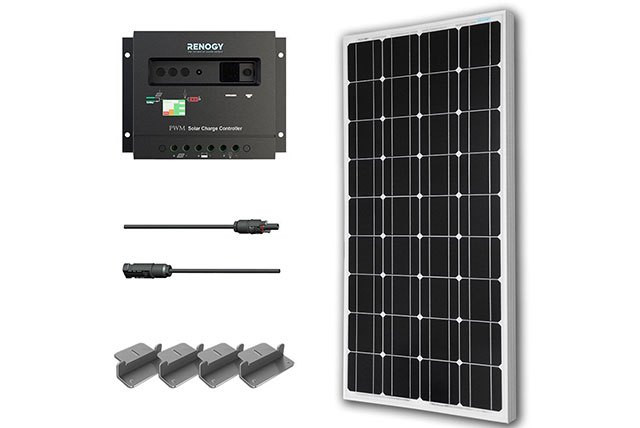
If you’ve been prepping for a while, you may have used some of your provisions during short-term emergencies. Perhaps you’ve used some when a storm knocked out power for a few hours. You know you’ve prepared well, because you were able to make meals without the use of kitchen appliances, and you had alternative lighting with fresh batteries. Simple things, like a manual can-opener, are additional proof that you’ve prepared well. A short-term power failure may even be a welcome change from your daily routine, and an excuse to make dinner on the grill.
On the other hand, prepping for an event that could result in societal collapse is no longer fun and games, it’s about your survival. It’s no longer a matter of settling for canned food for dinner. If we are forced to live through a grid down scenario, it’s whether or not you’ll have any food at all. It’s about dealing with starving people, who, in their desperation, will try to forcefully take what you have. It’s this possibility that drives you to take prepping to the next level.
Before you allocate significant cash resources to weapons, supplies, and survival equipment, you probably want to know what the odds are that you’ll ever need it. What is the likelihood that an event, or chain of events, could be serious enough to cause the collapse of society? Do the odds of that happening justify the significant cost of prepping for it? If you’ve never experienced anarchy, how will you know if you’re well prepared? It’s up to you to decide.
A massive and sustained power grid failure could cause a collapse of society, and it might happen in the not-to-distant future. I arrived at that conclusion not by accident, but rather by careful consideration of facts. As an Information Technology Professional I am well aware of the daily attacks on networked computer systems, and I know that cyber-criminals are getting smarter. Cyber-attacks on retailers and financial institutions are common place, as are attacks on U.S. Government agencies. With these things in mind, a successful attack on the power grid is not just possible, it’s inevitable. It’s not a matter of “if”, but “when”. Due to the severity of the damage that is possible, and the potential for a widespread and long-lasting outage, it’s high on my list of things that could result in a collapse of society, and therefore it’s what I prepare for.
Need more evidence? Consider this: In December of 2015, a freezing day in the Western Ukraine, a lone hacker shut down electricity to 225,000 residences. Power was restored in about 6 hours, but imagine a situation where multiple attackers attack multiple locations in a coordinated attack on the U.S. power grid. If successful, the outage would be widespread, not just localized to a specific area or region. To inflict the most suffering, the attack would probably occur in the winter months. Some communities, hospitals, and other facilities would have power from emergency generators, but only until they run out of fuel.
Cyber-attacks on retailers and financial institutions are common place, as are attacks on U.S. Government agencies.
A successful attack on the power grid need not be a cyber-attack. Just as 911 was a coordinated physical attack, coordinated physical attacks on multiple power generation or distribution sites are also a possibility. As undamaged facilities attempt to make up for the shortage created by the damaged facilities, they would become overloaded and eventually the entire power grid would shut down. Power plants that are able to isolate themselves from the grid would function for as long as they have fuel, but you and I may not be lucky enough to be in one of those areas.
Without communications, you won’t know where they are. You may recall the movie Waterworld, where Kevin Costner searched for “dry land”, not really knowing if it actually existed. For some people, searching for a stable society with electricity would be similar to that. Just like in the movie, avoiding the “bad guys” and struggling to survive, would be routine.
Terrorists hope to inflict as much suffering as they can on America. The recent attack in an Orlando nightclub appears to have been carefully planned, with escape routes blocked. As terrible as that attack was, less than 60 people lost their lives that morning. On the other hand, a coordinated attack on the U.S. power grid would cause massive suffering and death. I choose to take the threat seriously.
As disastrous as a successful coordinated physical attack on the power grid would be, an EMP event would be even worse. An EMP event could be either a deliberate attack by an enemy, or a massive solar flare. One such solar flare occurred in 2012, but barely missed the earth. Had earth been in its path, large parts of society would have been without power for months, if not years. A smaller solar eruption in 1989 knocked out power to Quebec.
In the event of a successful attack, or a large solar eruption, unprotected electronic devices would be destroyed. This includes the modules in your car. Imagine losing the use of your car, no working communication devices, no radio, no TV, no light, no refrigerator, and you could no longer cool or heat your home. It wouldn’t matter if you could make it to the grocery store, because the shelves would be empty within two days. In the event that a widespread power outage was to last for more than a few days, it’s easy to envision panic and anarchy.
It’s not just the hardship brought on by an absence of electricity, but also the confusion that results from the absence of electronic communications, that would lead to panic. Perhaps you can live without your phone, without texting, tweeting, or email, but being unable to check on loved ones might be more than some folks can handle.
Prepare for a situation such as this with the assumption that the power grid will be down for a very long time. Widespread damage to automobiles, as well as devices that contain sensitive electronic components, make up a worst-case scenario, and it would take months or perhaps years, to fully recover. A powerful EMP event would be just that bad. With these things in mind, for me, a comprehensive plan is actually two plans:
- A plan to implement if I can stay in my home
- A plan to implement if I have to bug out by all-terrain vehicle
My plan does not include an option to bug out on foot. I simply can’t carry enough with me to survive for very long, especially in the winter months. Instead of buying lightweight camping equipment, I’ve invested in weapons, ammo, and security devices for my home and property, not to mention stockpiles of food, and water purification capabilities. If I’m going down, I’ll go down fighting. Up until that time, I’ll be comfortable in my home.
In the event that I absolutely cannot stay in my home, I plan to bug out using my ATV vehicle. I’ve taken steps to protect that from an EMP attack. While I won’t be able to carry as much with me as I would like with that vehicle, the ability to travel off-road offers advantages over a standard automobile. In the event of an EMP attack, roads would be clogged with disabled vehicles. I can easily bypass obstructions with an ATV, and travel far from a danger zone in a relatively short time. I’ll go back for additional supplies only if I feel that I can do so safely.
I have a pre-selected bug-out location, and relatives not living with me are aware of it. Should they need to bug out, they know that they’re welcome to join me. In fact, in such a situation I would rather be with people I know and trust, instead of those I happen to meet up with.
My Provisions
My list of provisions includes most of the items you’d expect to find in anyone else’s list, so I won’t discuss those here, but I have additional items and special preparations that you don’t often see in others lists.
I own a small generator, but don’t consider it an integral part of my survival plan. Generators are impractical, primarily due to the need to store large quantities of fuel. A generator would only be good for the first few days, as you hunker down and begin to implement your survival plan. Once the stored fuel is used up, and all nearby sources of fuel exhausted, generators are useless. Additionally, the noise and smell of a generator advertises your presence to those who would harm you.

My alternative source of electricity is an off-grid solar-electric system which I described in detail in a previous post (Living in Comfort when the SHTF) on TPJ. My preps include the ability to repair any damage that may occur as the result of an EMP attack. Spare parts and test equipment are stored in a Faraday Cage to protect them. I’ve also stored CFL and LED lights, and other portable electronic devices that contain components which could be damaged by an EMP attack. I doubt that my solar panels would be damaged by an EMP event, but I have spare blocking diodes, just in case. I also have a spare inverter and charge controller. My batteries are protected from the elements, but not shielded from an EMP attack, since an EMP attack would probably not damage them.
Like my provisions list, my bug-out kit includes items that others may not have considered. Since GPS may be down, a compass is a must.
In the event that I have to bug out by ATV, and if time permits, I’ll take the major components of my off-grid solar equipment with me. I believe I can disassemble and pack the equipment in 6 hours or less. Once I’ve arrived at my bug-out destination, I’ll set up a makeshift off-grid solar electric system.
My alternative electricity preparedness is far greater than most other preppers for a reason; it’s an important component of my survival strategy. I’ve also taken great care to protect communications equipment, and to maintain the ability to provide refrigeration, lighting, and the ability to charge portable electronic devices. Having electricity for power tools would make rebuilding after a disaster much easier. Communications equipment may provide vital information, in the event that broadcasts exist. Lights can be used to help secure an area, be it a home or camping spot, unless there is reason to believe that those lights will attract unwanted attention. I’ll share what I have, with the expectation that others in my circle will share their special skills, such as hunting, fishing, trapping, medical, food preparation, construction, security, etc. Hopefully, my group will include at least one member who has the desire, strength, stamina, and know-how to maintain a large garden. My preps include seed storage.
Should I need to bug out, it’s likely that I’ll be able to find a working refrigerator/freezer, a necessity for preserving food, and to keep medicine from spoiling. However, if an EMP attack were to damage the refrigerator’s control module, I know how to bypass that, and apply power directly to the compressor. The refrigerator/freezer could then be controlled by a mechanical timer, so that the compressor doesn’t run continuously. The modification is easy to make, and I’ve included a mechanical timer in my bug out supplies.
The alternative refrigeration device at my home is a 6 cubic foot chest freezer. It uses much less electricity than my upright refrigerator/freezer, and therefore is less of a load on my off-grid solar electric system. I can also use it to make ice, which can be used in a cooler for items that need to be kept cold, but not frozen. Because the chest freezer is a simple device, I can easily make the wiring change I described, should that become necessary.
Another prep that is currently a work in progress is the storage of important survival information. Understanding that the World Wide Web will probably be down, I’m storing as much information as I can on a Kindle Fire. Subjects include; medical information, edible plants, crop production, food processing and storage, water purification, raising animals for food, maps, and so on. I prefer the Kindle Fire over a laptop or PC because of its portability and low power consumption. It can easily be charged from the accessory socket in any automobile, or with the off-grid solar system I’ve described. I’ll store the Kindle Fire in a Faraday Cage until it is needed, or until I bug out. If I bug out, I’ll wrap the Kindle Fire in aluminum foil and store it in a waterproof bag.
Understanding that an EMP attack may be followed by additional EMP attacks, my provisions include the ability to put together a Faraday Cage once I’ve arrived at a bug-out location. When not in use, sensitive devices will be stored in that.
What is a Faraday Cage, and how do I make one?
A Faraday Cage is an enclosure of any kind which includes a layer of electrically conductive material. It can be as large as an entire room, or smaller than a deck of cards. The device(s) to be protected are wrapped in the conductive material, but insulated from it by a non-conductive material. The electrically conductive material can be metal, including aluminum foil, or a fine-mesh screen. The electrical signals will not pass through fine mesh screen, but there must be no openings larger than that. There should be no hole or gap larger than 1mm, about the thickness of a dime.
A simple Faraday Cage can be made by wrapping the device to be protected in non-conductive material, such as cloth, and then by wrapping that with three layers of aluminum foil. Make sure there are no holes or gaps through which electrical signals can pass. Put that in a cardboard box, and then wrap it with aluminum foil. This provides two layers of protection from EMP signals. That might be considered overkill, but you don’t know how strong the EMP signal (the attack or solar flare), will be.
The type of Faraday Cage described above would be well suited for bugging out, but inconvenient for frequently used devices. Instead, a metal toolbox, or metal cabinet, lined with cardboard would work well. Aluminum tape, the kind used in duct work, can be used to seal holes and gaps. Steel wool can be used to better seal gaps around the door, if needed. Wrap the devices to be protected in aluminum foil, and then place them in the metal container. This method provides two layers of protection, but easier access to frequently used items.
A larger Faraday Cage can be made by using a metal trash can, or an unused chest freezer, but you might have to seal the seams on the lid or door. A device wrapped in aluminum foil, placed in a cardboard box that is also wrapped in aluminum foil, and then placed in a sealed trash can, would provide three layers of protection, which would probably be enough to protect devices from strong EMP attacks.

Imagine losing the use of your car, no working communication devices, no radio, no TV, no light, no refrigerator, and you could no longer cool or heat your home.
After you’ve built a Faraday Cage, test it. Place a tuned-in radio in the Faraday Cage. When the cage is closed, all electronic signals should be blocked, and you should no longer hear the radio broadcast.
Conclusion
Can you live without your phone, texting, tweeting, and email? That may seem like a silly question, but I wouldn’t rule out the psychological effect of losing those capabilities.
Survival without electricity is possible, of course, but I wonder how long most people will last without it. The winter months would be very difficult. On the other hand, the ability to process and store food until it’s needed would free you from the daily task of finding food. The ability to cook food using kitchen appliances is not just convenient; it’s more discreet than cooking over a campfire, adding to your security. The availability of lighting would allow you to extend working hours into the evening, and contribute to a level of protection from those who would steal your supplies, or harm you.
Banding together with others can dramatically increase your survival odds. Many of us already have a stockpile of food, and know how to purify water for drinking, but the greatest threat to survival may come from other humans. Having one or more group members with military or police training would reduce the likelihood of falling prey to those who would do you harm. Additionally, each member of your group will need to willingly perform a set of chores that match his/her age and abilities. A portable database of survival information will help to fill in survival skill gaps within a group. Your Christian values dictate that you take care of those who cannot care for themselves, but you’re wise to weed out those who are able, but not willing, to contribute. There is no room for those who would jeopardize the survival of the group. Survival is not just about stockpiling, it’s also about producing.
If you find yourself in need of a group to join, assess potential groups carefully. Keep your assets hidden, and don’t discuss them until you’re sure you can trust the group. If the group has a very liberal mindset, they may want to take your provisions, and distribute them among the rest of the group. Make sure you understand the “rules”, and are willing to abide by them. Assess the group leader. If he/she more closely resembles a cult leader than a resource manager, move on.
Since you don’t know how strong the EMP signal (the attack or solar flare), will be, you won’t know the extent of the damage until afterwards. It’s possible that computers, TV’s, radios, cell phones, CFL and LED lights, and portable electronic devices will be ruined. Devices that do not contain sensitive components, such as incandescent light bulbs, electric frying pans, and hot plates will probably work, but none of that will matter if you don’t have a source of electricity. Without electricity, refrigerated food will spoil.
Prepping well for a power grid failure requires an alternative source of electricity, other than a generator. That alternative source of electricity needs to be robust, to facilitate lights, refrigeration, communication devices, power tools, and kitchen appliances, as well as to contribute to home heating and cooling. While a small off-grid system will give you all of those capabilities, a larger system will allow you to do all of those things simultaneously, significantly contributing to your quality of life. Most of all, the system needs to be sustainable. A mid-size off-grid solar electric system is the best choice. It’s expensive, but one such system can serve multiple families within a survival group.
Other self-sufficiency and preparedness solutions recommended for you:
Everything You Need To Know About Your Plants From The Soil Up
Vital self-sufficiency lessons our great grand-fathers left us
Knowledge to survive any medical crisis situation
Liberal’s hidden agenda: more than just your guns
Build yourself the only unlimited water source you’ll ever need
4 Important Forgotten Skills used by our Ancestors that can help you in any crisis
























